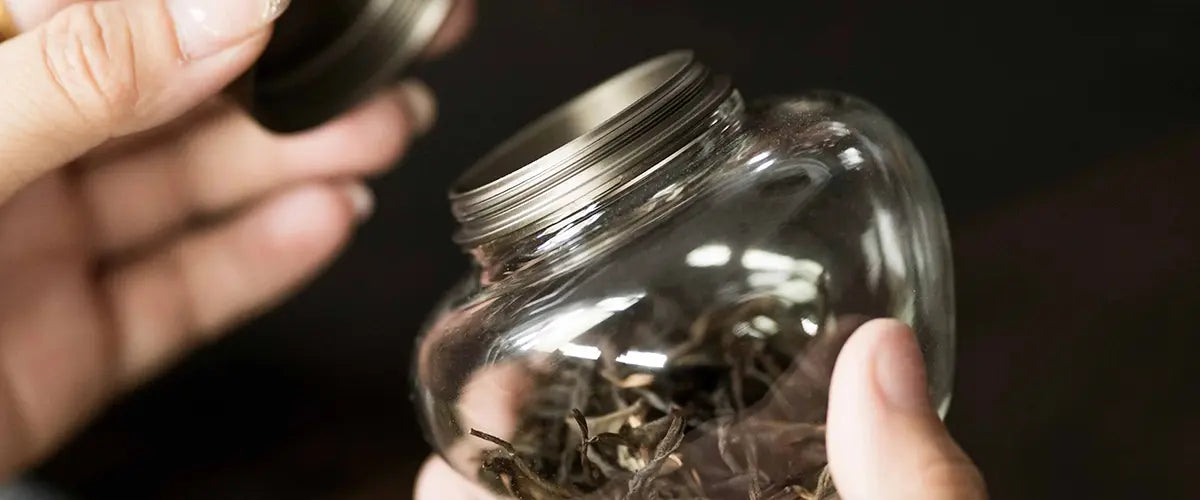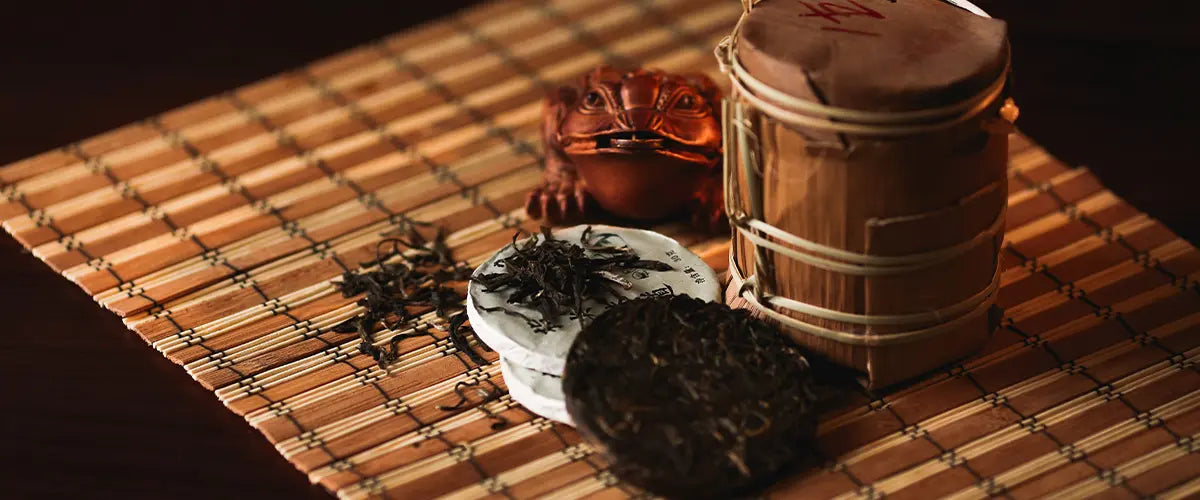Когда вы покупаете и накапливаете некоторые из ваших любимых сортов китайского листового чая, вы наверняка начнете задумываться о вопросах его хранения.
Хранение китайского листового чая может быть сложным или простым. Как только вы поймете некоторые необходимые принципы, вы сможете гибко выбирать подходящий вам метод хранения китайского листового чая .
Какую пользу вы получите от этой статьи?
>Простой в применении (принятый многими любителями чая) способ хранения.
>Аспекты, которые следует учитывать при хранении чая.
>Чего следует избегать при воздействии на чай.

Простой и универсальный метод хранения
Для хранения чая можно использовать небольшие банки, которые герметичны, чисты и подходят для хранения продуктов дома. Это метод, который используют многие любители чая.
Эти банки удобны для хранения и легкодоступны, и их можно гибко размещать в разных местах дома. Вы также можете использовать свои небольшие банки для хранения чая, чайные сервизы и чайных питомцев, чтобы создать пространство для чаепития.
Где можно найти эти банки?
Это одна из причин, почему мне нравится этот способ хранения. Вы можете легко найти небольшие банки, подходящие для хранения чая.
Многие покупные чаи продаются в собственных банках, поэтому используйте их с толком. Другие банки из-под еды также являются хорошим выбором.
Вы также можете приобрести банки для чая, специально предназначенные для хранения. Эти банки часто обладают хорошей герметичностью и способностью сохранять свежесть, что позволяет лучше сохранить вкус лучшего листового чая .
Могут ли банки быть прозрачными?
Если вы собираетесь хранить чай в течение длительного времени, никогда не используйте прозрачные банки.
Для краткосрочного хранения, например, несколько месяцев, прозрачные банки являются хорошим выбором. Их легко мыть и они легкодоступны. Самое главное, прозрачные банки позволяют вам ясно видеть чайные листья внутри, что очень удобно для чаев, которые часто используются.
Не забудьте хранить прозрачные банки с чаем в шкафу или в защищенном от света углу комнаты.
Небольшой совет:
Если вы хотите использовать стеклянные банки для хранения чая, но у вас нет полностью защищенной от света среды, вы можете использовать янтарные стеклянные банки. Янтарный цвет может отфильтровывать большую часть света.
Найдите больше китайского листового чая с помощью нашего китайского чайного сэмплера.>>>
Дополнительные советы по лучшему хранению чая:
Выбор материала контейнеров для хранения
Керамические контейнеры подходят для хранения чая. Этот тип контейнера подходит для большинства видов чая, таких как листовой улун , листовой черный чай и т. д. Фарфоровые банки, фиолетовые глиняные банки или другие керамические банки являются отличным выбором.
Жестяные контейнеры также очень подходят для хранения чая. По сравнению с другими металлическими материалами, олово обладает высокой стабильностью, не окисляется, нетоксично и не имеет запаха. Жестяные контейнеры могут эффективно сохранять свежесть чая и очень подходят для листового зеленого чая и листового желтого чая.
Железные контейнеры можно использовать для хранения чая, но это не основная рекомендация. Это связано с тем, что железные контейнеры склонны к ржавчине во влажных условиях, что может загрязнить чайные листья.
Стеклянная тара, как упоминалось ранее, является хорошим выбором при определенных условиях.

Настройка среды хранения
Место хранения чая должно быть при комнатной температуре. Особое внимание следует уделять хранению чая вдали от источников тепла, таких как обогреватели.
В месте хранения не должно быть факторов, которые могли бы загрязнить ваш чай, таких как резкие запахи и влажность.
Важность герметичного хранения
Правильная герметизация может помочь избежать многих проблем при хранении чая.
С одной стороны, нам нужно рассмотреть герметизацию контейнера. Некоторые банки для чая с двухслойными крышками имеют отличную герметизацию и очень подходят для хранения дорогих/драгоценных чаев, таких как некоторые сорта Да Хун Пао высшего сорта и т. д. Банки для чая с двухслойными крышками могут лучше сохранить вкус этих лучших улунских чаев .
С другой стороны, лучше всего минимизировать количество воздуха внутри контейнера. В этом случае предпочтительнее выбирать банки с подходящей емкостью или герметичные пакеты.
Найдите больше листового чая улун с помощью нашего пробника чая улун.
Регулярный осмотр чая
Вы можете установить график, например, проверять запасы чая каждые несколько месяцев.
Это не только позволяет вам заранее обнаружить любые потенциальные проблемы с чаем, но и помогает вам отслеживать, сколько у вас чая, не давая чаю быть забытым в углу (что случается довольно часто). Когда вы понимаете, что у вас слишком много чая на складе, хорошей идеей будет упаковать часть из них в подарочные наборы для чая , чтобы подарить друзьям.
Важный принцип хранения чая — не покупать слишком много чая. Поэтому, прежде чем убедиться, нравится ли вам вкус листового чая, рекомендуется попробовать его с помощью пробника для листового чая , что более экономично и удобно.
Чего боится ваш чай?
Аспекты, упомянутые выше, не являются обязательными для соблюдения. Фактически, если вы не являетесь профессиональным экспертом по хранению чая, большинство любителей чая не могут придерживаться всех из них. Так есть ли способ для нас хранить чай лучше?

Есть. Чай боится определенных элементов. Если вы можете хранить чай вдали от этих элементов, он может хорошо храниться в течение длительного времени. Пожалуйста, убедитесь, что ваш чай хранится вдали от:
- Воздействие света
- Источники тепла
- Сильные запахи
- Влага
- Избыток воздуха (кислорода)
На основании этих факторов вы можете гибко выбирать способ хранения.
Исключением является чай пуэр:
Пуэр вызревает во время хранения, улучшая свои вкусовые качества. Необходимыми условиями для выдержки пуэра являются определенные уровни влажности и воздуха.
Поэтому при хранении Пуэра избегайте воздействия света, источников тепла и резких запахов.
Если вы хотите узнать больше о китайских листовых чаях, воспользуйтесь пробником чая iTeaworld, который поможет вам открыть для себя еще больше прекрасных китайских чаев.
Надеемся, эта статья поможет вам найти подходящий метод хранения чая, который позволит лучше сохранить вкус ваших любимых китайских чаев.











































































